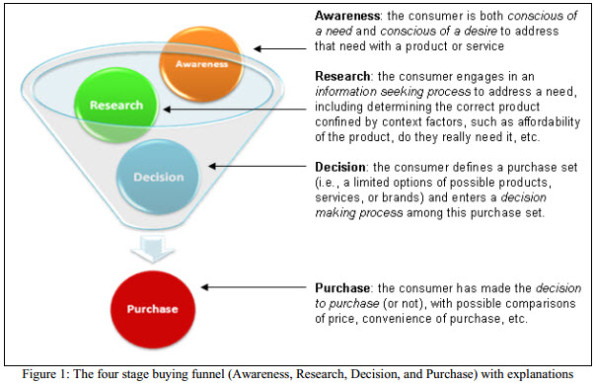Author: Neil Patel / Source: Quick Sprout People are predictable. They have a set of observable behaviors that can be analyzed and assesse
People are predictable.
They have a set of observable behaviors that can be analyzed and assessed in a scientific manner.
And when you get right down to it, marketing is all about psychology.
Understanding what makes consumers tick and what compels them to buy is your ticket to maximizing your ROI.
And it’s no different with SEM.
Get inside the heads of search users, and you can mount an effective strategy that can not only bring in leads but also get a sizable portion of them to convert.
In this post, I’d like to go over 17 specific facts about search psychology that will shape your campaign.
1. Search queries reflect user intent
Okay, so this may not be exactly a groundbreaking statement.
Of course, search queries reflect a person’s intent.
But allow me to elaborate.
The majority of consumers are in one of the four phases of the buying funnel: awareness, research, decision, and purchase.

2. People have inherently selfish motives
Let’s be totally honest.
We’re all selfish to at least some extent.
Now, I’m not suggesting all search engine users are terrible people, but at the end of the day, they want to know what’s in it for them.
The only reason they’ll click on and explore your content is if it provides genuine value and gives them what they need.
Make sure you don’t make it about your brand but, rather, about your audience.
Having this mindset will help guide you when deciding what type of content to create and your overall approach.
3. Long-tail is the most common search method
Using long-tail keywords is one of the older SEO strategies.
Arguably, it’s one of the few practices still relevant today.
I’m sure you’ve heard that long-tail keywords account for roughly 70% of all searches.

It’s true.
But why am I telling you something you probably already know?
It’s because most people perform natural-sounding, longer search queries rather than shorter, disjointed ones.
Not only does this strategy decrease your competition level for keywords, you can better satisfy search engine users.
This brings us to our next point.
4. Most people use conversational search queries
Remember Google’s Hummingbird update a few years ago?
Its main emphasis was to tweak Google’s algorithm to make search results better match user intent.
This was the first solid piece of evidence that Google was evolving and becoming more “intent-centric,” attempting to understand the underlying meaning behind keywords.
This, combined with an increase in mobile voice searches (20% of mobile queries were voice searches in 2016), means one thing.
More and more search users are using a conversational tone.
And this trend is only going to continue with digital assistants becoming more and more popular.

Here’s an example.
Rather than searching for “oil change Portland,” a person would be more likely to search for “where can I find an oil change in Portland.”
This is an important thing to keep in mind when structuring your keywords.
Using long-tail, conversational keywords “scratches the itch” of many search users.
5. Readers love “sociolinguistics”
Sociolinguistics is defined as
the descriptive study of the effect of any and all aspects of society, including cultural norms, expectations and context, on the way language is used, and the effects of languages use on society.
In layman’s terms, this simply means writing while using words and phrases you would use in everyday life.
It’s a technique I’ve based most of my blog writing on.
I approach it as if I’m having a conversation rather than being a journalist.
And it’s totally worked.
Using sociolinguistics is a proven way to establish trust and get people to like you.
This keeps readers happy, which keeps search engines happy, creating a virtuous cycle.
6. Visitors want every page to be a landing page
There’s an article from Search Engine Land I really like.
It’s about devising a psychology-based SEO strategy.
There’s one section in particular that really resonated with me. Here’s a screenshot:

We typically reserve a single section of our website as a designated landing page.
But part of sound search psychology is addressing visitors’ pain points at nearly every stage of the buying journey.
This means the content you create should always be highly relevant to what the anticipated pain points would be for a particular keyword.
Answering the three questions posed by Search Engine Land will help guide your content creation and ensure you’re consistently hitting your target.
7. Screw clicks—focus on sales
Traffic is great.
Of course, you want to reach the highest possible ranking and crush it.
But the results are going to be only marginal if you’re getting clicks but barely any sales.
Here’s…

COMMENTS